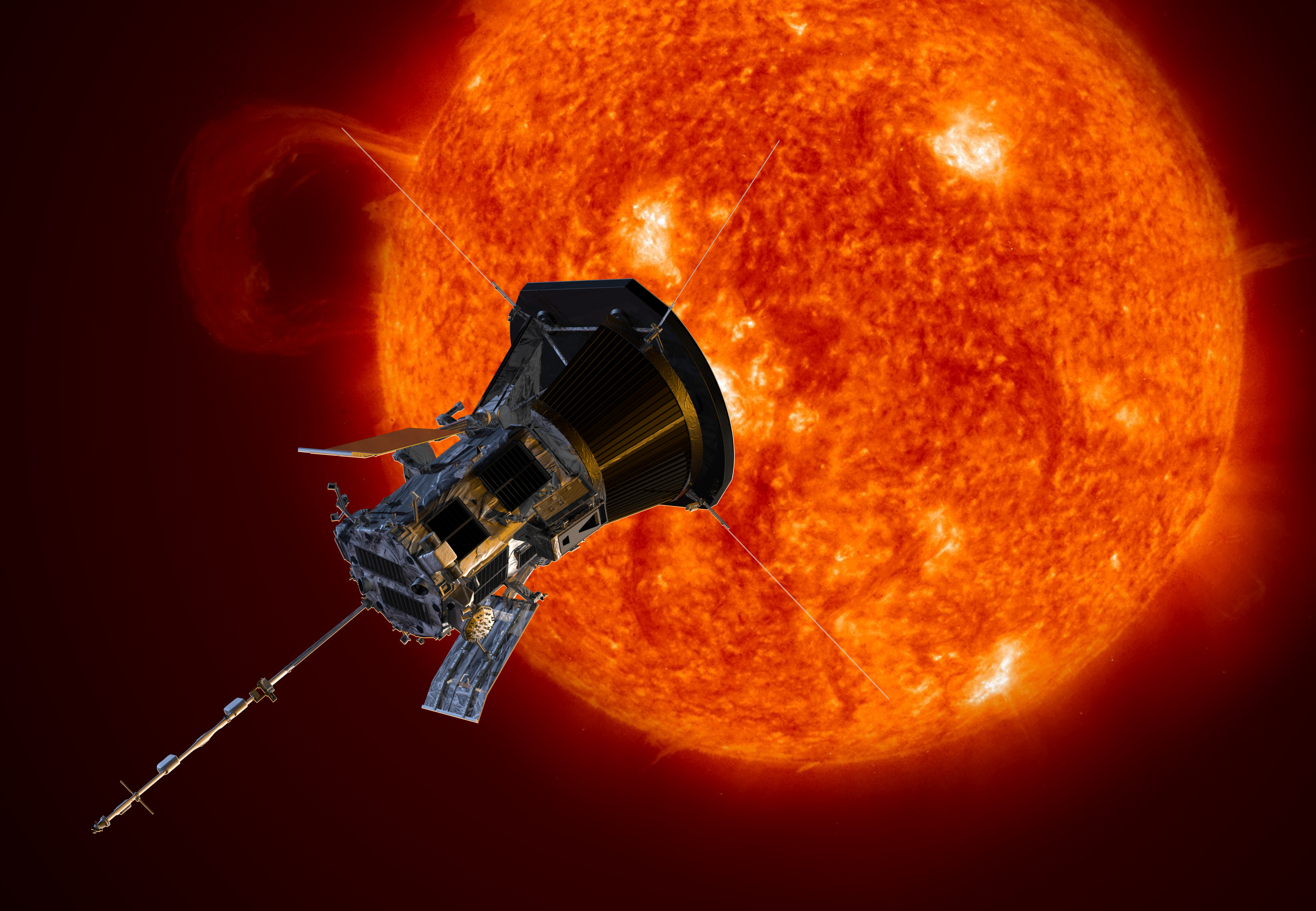Parker Solar Probe Completes Second Close Approach to the Sun
Posted on 2019-04-05 10:31:36Parker Solar Probe has successfully completed its second close approach to the Sun, called perihelion, and is now entering the outbound phase of its second solar orbit. At 6:40 p.m. EDT on April 4, 2019, the spacecraft passed within 15 million miles of our star, tying its distance record as the closest spacecraft ever to the Sun; Parker Solar Probe was traveling at 213,200 miles per hour during this perihelion.
The Parker Solar Probe mission team at the Johns Hopkins Applied Physics Laboratory in Laurel, Maryland scheduled a contact with the spacecraft via the Deep Space Network for four hours around the perihelion and monitored the health of the spacecraft throughout this critical part of the encounter. Parker Solar Probe sent back beacon status “A” throughout its second perihelion, indicating that the spacecraft is operating well and all instruments are collecting science data.
“The spacecraft is performing as designed, and it was great to be able to track it during this entire perihelion,” said APL’s Nickalaus Pinkine, Parker Solar Probe mission operations manager. “We’re looking forward to getting the science data down from this encounter in the coming weeks so the science teams can continue to explore the mysteries of the corona and the Sun.”
Parker Solar Probe began this solar encounter on March 30, and it will conclude on April 10. The solar encounter phase is roughly defined as when the spacecraft is within 0.25 AU — or 23,250,000 miles — of the Sun. One AU, or astronomical unit, is about 93 million miles, the average distance from the Sun to Earth.
- Geoff Brown, Johns Hopkins APL

ObservingSun
Credit: NASA/Johns Hopkins APL/Steve Gribben
High-Res Image